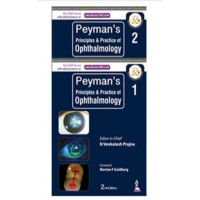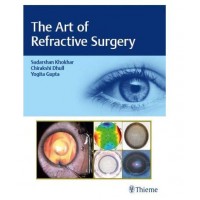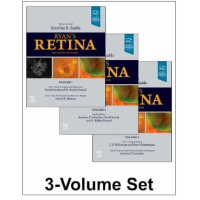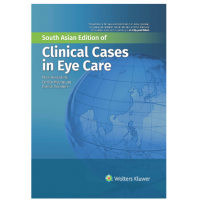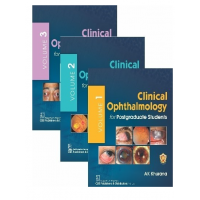Contents
Part 1: Genetics
1.1 Fundamentals of Human Genetics
1.2 Molecular Genetics of Selected Ocular Disorders
1.3 Genetic Testing and Genetic Counseling
Part 2: Optics and Refraction
2.1 Light
2.2 Optics of the Human Eye
2.3 Clinical Refraction
2.4 Correction of Refractive Errors
2.5 Ophthalmic Instruments
2.6 Wavefront Optics and Aberrations of the Eye
Part 3: Refractive Surgery
3.1 Current Concepts, Classification, and History of Refractive Surgery
3.2 Preoperative Evaluation for Refractive Surgery
3.3 Excimer Laser Surface Ablation: Photorefractive Keratectomy (PRK), Laser Subepithelial Keratomileusis (LASEK) and Epi-LASIK
3.4 Laser in Situ Keratomileusis (LASIK)
3.5 Small Incision Lenticule Extraction
3.6 Wavefront and Topography-Based Excimer Laser Refractive Surgery
3.7 Phakic Intraocular Lenses
3.8 Intrastromal Corneal Ring Segments: Synthetic and Cairs
3.9 Surgical Treatment of Presbyopia
3.10 Excimer Laser Phototherapeutic Keratectomy
3.11 Corneal Cross-Linking
Part 4: Cornea and Ocular Surface Diseases
Section 1: Basic Principles
4.1 Cornea and Ocular Surface Diseases
4.2 Anterior Segment Imaging Modalities
Section 2: Congenital Abnormalities
4.3 Congenital Corneal Anomalies
Section 3: External Diseases
4.4 Blepharitis
4.5 Herpes Zoster Ophthalmicus
Section 4: Conjunctival Diseases
4.6 Conjunctivitis: Infectious and Noninfectious
4.7 Allergic Conjunctivitis
4.8 Tumors of the Conjunctiva
4.9 Pterygium and Conjunctival Degenerations
4.10 Ocular Cicatricial Pemphigoid/Mucous Membrane Pemphigoid
Section 5: Scleral and Episcleral Diseases
4.11 Episcleritis and Scleritis
Section 6: Corneal Diseases
4.12 Bacterial Keratitis
4.13 Fungal Keratitis
4.14 Parasitic Keratitis
4.15 Herpes Simplex Keratitis
4.16 Peripheral ulcerative keratitis
4.17 Noninfectious Keratitis
4.18 Keratoconus and Other Ectasias
4.19 Anterior Corneal Dystrophies
4.20 Stromal Corneal Dystrophies
4.21 Corneal Endothelium
4.22 Corneal Degenerations
4.23 Dry Eye Disease
Section 7: Miscellaneous Conditions
4.24 Complications of Contact Lens Wear
4.25 Corneal and External Eye Manifestations of Systemic Disease
Section 8: Trauma
4.26 Acid and Alkali Burns
Section 9: Surgery
4.27 Endothelial Keratoplasty: Targeted treatment for corneal endothelial dysfunction
4.28 Penetrating Keratoplasty
4.29 Deep Anterior Lamellar Keratoplasty
4.30 Superficial Corneal Procedures with corneal crosslinking
4.31 Artificial Cornea (Keratoprosthetics)
4.32 Conjunctival Surgery
4.33 Surgical Ocular Surface Reconstruction
4.34 Management of Corneal Thinning, Melting, and Perforation
Part 5: The Lens
5.1 Basic Science of the Lens
5.2 Evolution of Intraocular Lens Implantation
5.3 IOL Optics
5.4 Bag-in-the-Lens Cataract Surgery
5.5 Epidemiology, Pathophysiology, Causes, Morphology, and Visual Effects of Cataract
5.6 Patient Workup for Cataract Surgery
5.7 Intraocular Lens Power Calculations
5.8 Indications for Lens Surgery/Indications for Application of Different Lens Surgery Techniques
5.9 The Pharmacotherapy of Cataract Surgery
5.10 Anesthesia for Cataract Surgery
5.11 Phacoemulsification Fluidics
5.12 Refractive Aspects of Cataract Surgery
5.13 Small Incision and Femtosecond Laser-Assisted Cataract Surgery
5.14 Capsulectomy: Modern devices Apart from FLACS
5.15 Manual Cataract Extraction
5.16 Combined Procedures
5.17 Cataract Surgery in Complex Eyes
5.18 Pediatric Cataract Surgery
5.19 Complications of Cataract Surgery
5.20 Secondary Cataract
5.21 Outcomes of Cataract Surgery
Part 6: Retina and Vitreous
Section 1: Anatomy
6.1 Structure of the Neural Retina and Retinal Pigment Epithelium
6.2 Retinal and Choroidal Circulation
Section 2: Ancillary Tests
6.3 Contact B-Scan Ultrasonography
6.4 Camera Based Ancillary Retinal Testing: Autofluorescence, Fluorescein and Indocyanine Green Angiography
6.5 OCT in Retinal Imaging
6.6 Optical Coherence Tomography Angiography
6.7 Retinal Electrophysiology
Section 3: Basic Principles of Retinal Surgery
6.8 Light and Laser Injury
6.9 Scleral Buckling Surgery
6.10 Vitrectomy
6.11 Intravitreal Injections and Medication implants
Section 4: Dystrophies
6.12 Progressive and “Stationary” Inherited Retinal Degenerations
6.13 Inherited Retinal Disease
Section 5: Vascular Disorders
6.14 Hypertensive Retinopathy
6.15 Retinal Arterial Obstruction
6.16 Venous Occlusive Disease of the Retina
6.17 Retinopathy of Prematurity
6.18 Diabetic Retinopathy
6.19 Ocular Ischemic Syndrome
6.20 Hemoglobinopathies
6.21 Coats' Disease and Macular Telangiectasia
6.22 Radiation Retinopathy and Papillopathy
6.23 Retinal Arterial Macroaneurysms
Section 6: Macular Disorders
6.24 Age-related Macular Degeneration
6.25 Secondary Causes of Choroidal Neovascularization
6.26 Central Serous Chorioretinopathy
6.27 Macular Hole
6.28 Epiretinal Membrane
6.29 Vitreomacular Traction
6.30 Cystoid Macular Edema
Section 7: Retinal Detachment
6.31 Retinal Breaks and Other Peripheral Retinal Lesions
6.32 Rhegmatogenous Retinal Detachment
6.33 Serous Detachments of the Neural Retina
6.34 Suprachoroidal Hemorrhage
6.35 Proliferative Vitreoretinopathy
Section 8: Trauma
6.36 Posterior Segment Ocular Trauma
6.37 Distant Trauma with Posterior Segment Effects
6.38 Retinal Toxicity of Systemically Administered Drugs
Part 7: Uveitis and Other Intraocular Inflammations
Section 1: Basic Principles
7.1 Anatomy of the Uvea
7.2 General Approach to the Uveitis Patient and Treatment Strategies
Section 2: Infectious Causes of Uveitis—Viral
7.3 Herpetic Viral Uveitis
7.4 Non-herpetic viral infections: West Nile, Chikungunya, Zika, Ebola, HTLV 1, Measles, Rubella
Section 3: Infectious Causes of Uveitis-Bacterial
7.5 Syphilitic and Other Spirochetal Uveitis
7.6 Tuberculosis, Leprosy and Brucellosis
7.7 Bartonella-related Infectious Uveitis (Cat Scratch disease) and Whipple's Disease
7.8 Infectious Endophthalmitis
Section 4: Infectious Causes of Uve


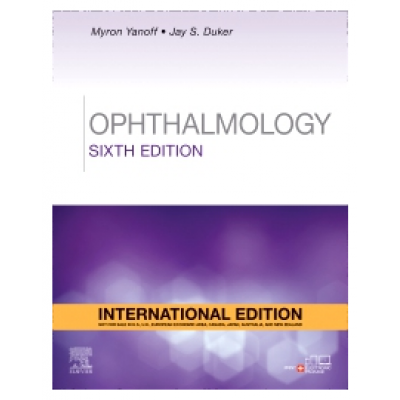
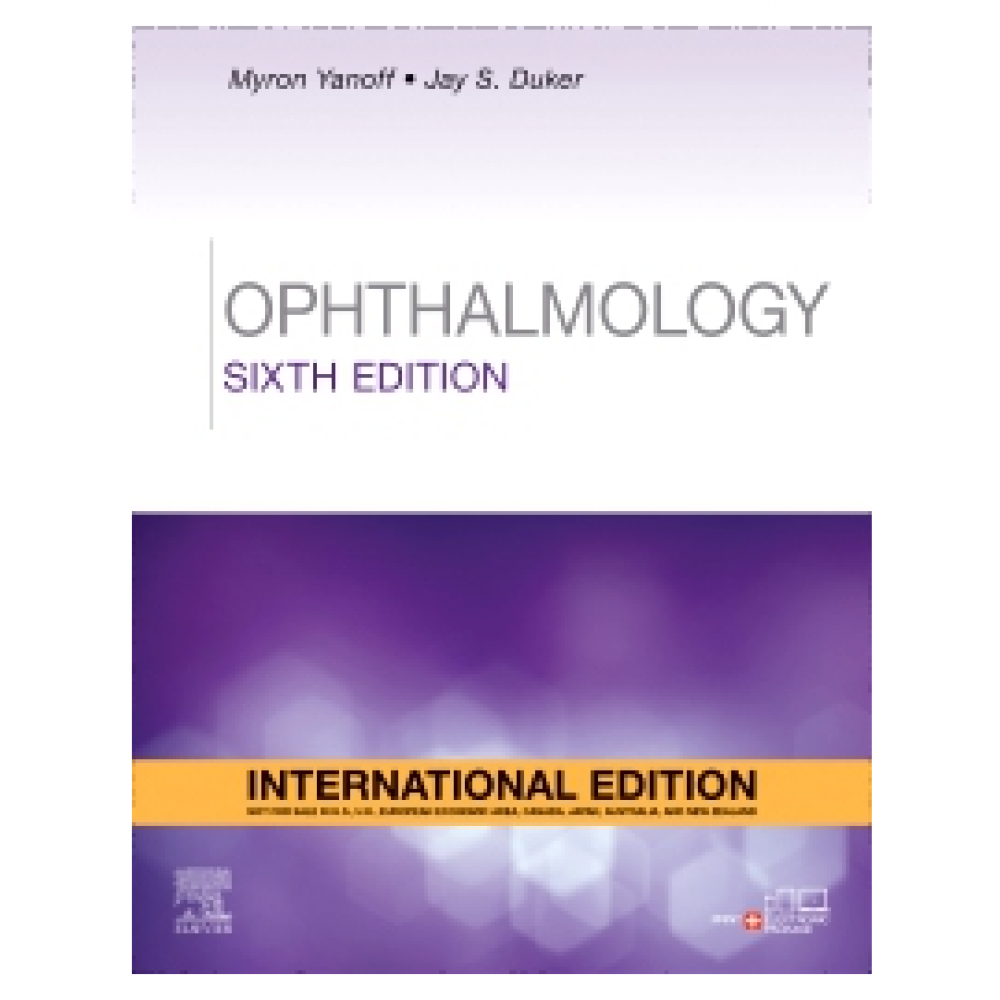
.jpg)
-200x200.jpeg)
